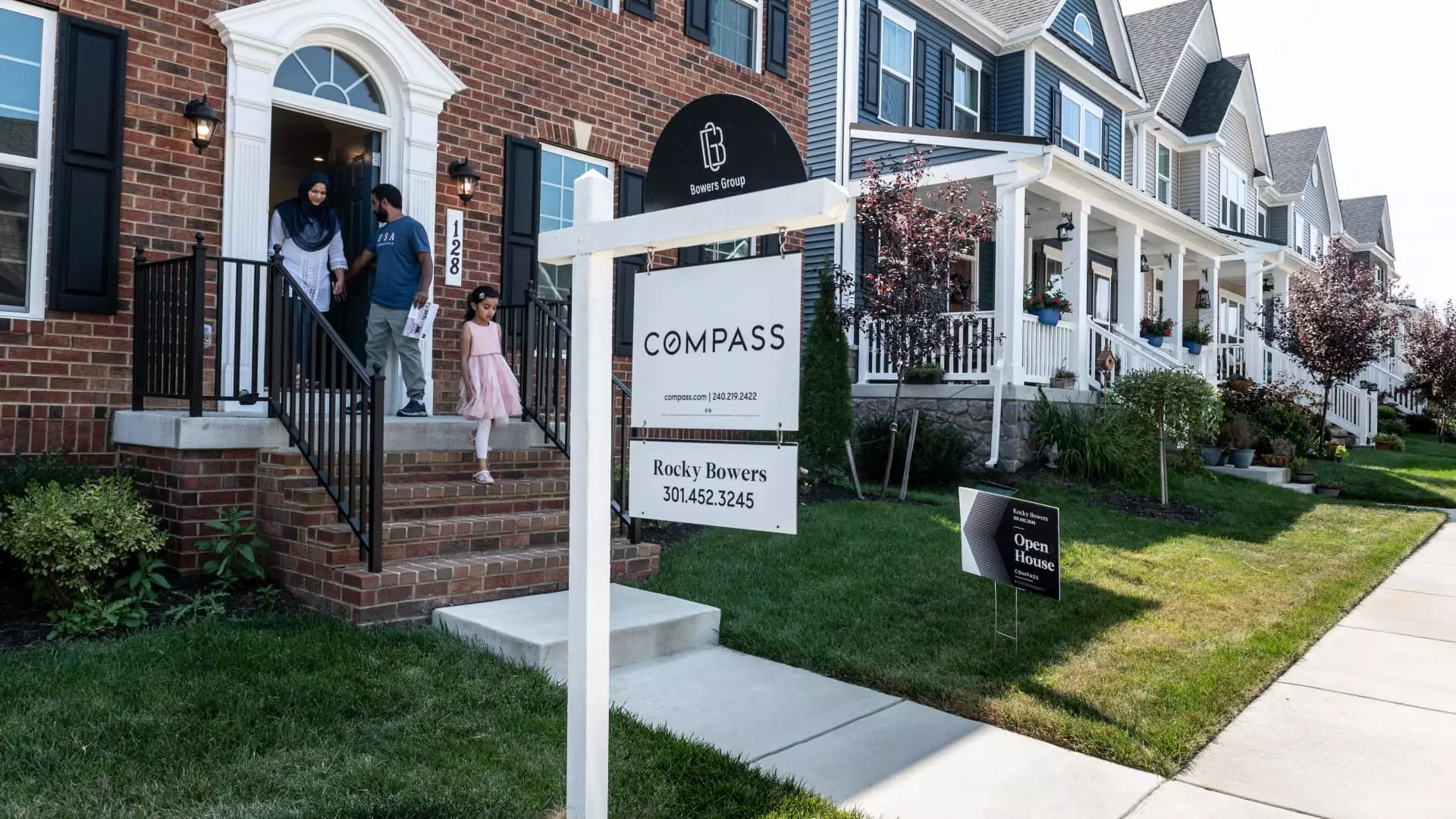The U.S. housing market, a critical pillar of the economy, is currently grappling with a convergence of challenges. Preexisting issues—high mortgage interest rates, a dwindling supply of homes for sale, and skyrocketing home prices—are now compounded by the imposition of tariffs on building materials. This intertwining of factors could have profound implications for both builders and potential homeowners, pushing the dream of homeownership further out of reach for many.
The recent tariffs levied by the Trump administration on essential building supplies—specifically softwood lumber imported from Canada and wallboard from Mexico—are poised to escalate construction costs significantly. Approximately 30% of softwood lumber consumed in the U.S. comes from Canada, while gypsum, a vital material for drywall, is chiefly sourced from Mexico. The 25% tariffs not only inflate the price of these critical materials but also directly impact the overall cost structure for new constructions. According to Carl Harris, chairman of the National Association of Home Builders (NAHB), such tariffs ultimately lead to higher home prices, which are likely to discourage new development and further exacerbate the existing housing supply crisis.
Given the steep rise in home prices—over 40% since the pandemic began—there’s a growing anxiety that these tariffs will trigger a more profound affordability crisis, particularly for first-time homebuyers. Jaret Seiberg from TD Cowen Washington Research Group emphasizes the dual nature of the tariffs: while they present an immediate financial hurdle, they could also galvanize legislative proposals aimed at bolstering entry-level construction through expanded tax credits. This potential policy shift raises an essential question regarding how governments can best balance immediate economic pressures with long-term infrastructure needs.
Homebuyers, particularly those trying to enter the market, are likely to find themselves squeezed between rising prices and diminishing purchasing power. The integration of tariffs into the economic landscape means that not only will new homes be expensive, but the ripple effects could also impact the prices of existing homes. As construction costs escalate, builders may pass those costs onto consumers, which could lead to an inflationary spiral in home prices.
Moreover, the expectation that interest rates would ease this year could be undone if inflation rises due to the higher costs of building materials. A firestorm of increasing prices—whether for homes, construction materials, or consumer goods—will likely lead to reduced discretionary spending among potential buyers. The prospect of a stagnating housing market looms large as consumers grapple with diminished financial flexibility.
A Struggling Labor Market Compounds Issues
Adding another layer of complexity is the ongoing labor shortage in the construction sector, worsened by recent immigration policies. About 30% of construction workers are immigrants, a significant portion of whom are undocumented. As mass deportations escalate, the construction industry is left grappling with labor deficits at a time when demand for housing creation remains high. Bruce McNeilage, CEO of Kinloch Partners, strongly articulates this dilemma by questioning the viability of a housing market if the workforce tasked with building those homes dwindles.
From this perspective, the combination of tariffs and labor shortages creates a perfect storm. Builders are increasingly under pressure to complete projects on time and within budget, yet face rising costs and an inability to secure a reliable workforce. As construction delays become commonplace, the impact could extend beyond new developments to influence the entire housing ecosystem.
Looking Forward: Policy Responses and Market Outlook
The current state of the housing market underscores a critical tension between immediate economic policies and long-term market health. The NAHB’s appeal to exempt building materials from tariffs aligns with their broader mission of expanding housing supply. As the political climate evolves, it is crucial for lawmakers to address these pressing issues with solutions that truly resonate with the needs of both builders and consumers.
The interplay between tariffs, labor shortages, and rising costs presents a multifaceted challenge that cannot be overlooked. The effects of these policies will extend far beyond the construction industry, impacting the wider economy and making homeownership less attainable for many. This situation serves as a wake-up call for policymakers to implement thoughtful strategies that acknowledge and respond to the complexities of the housing market, ensuring that it can rise to meet the challenges ahead.

